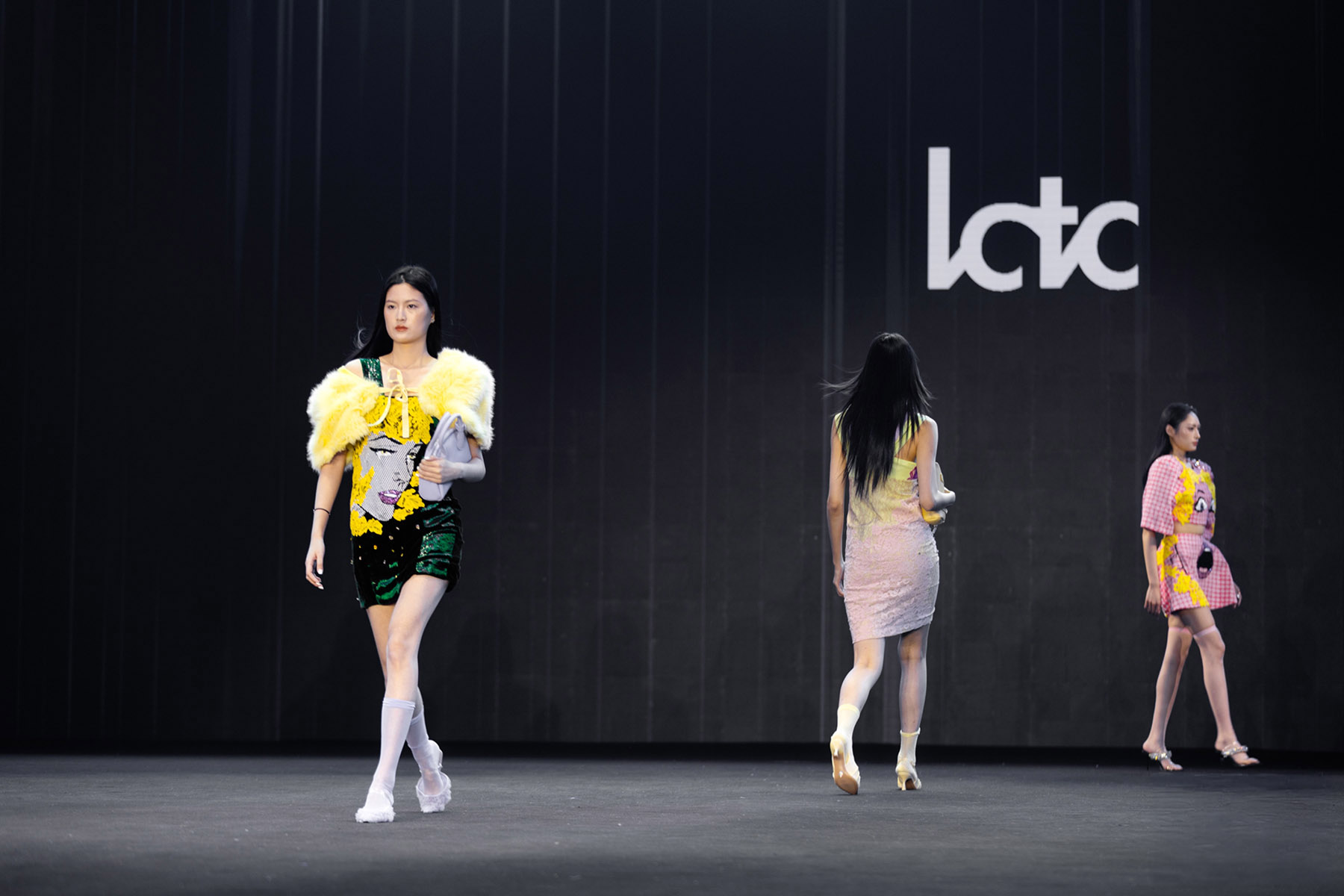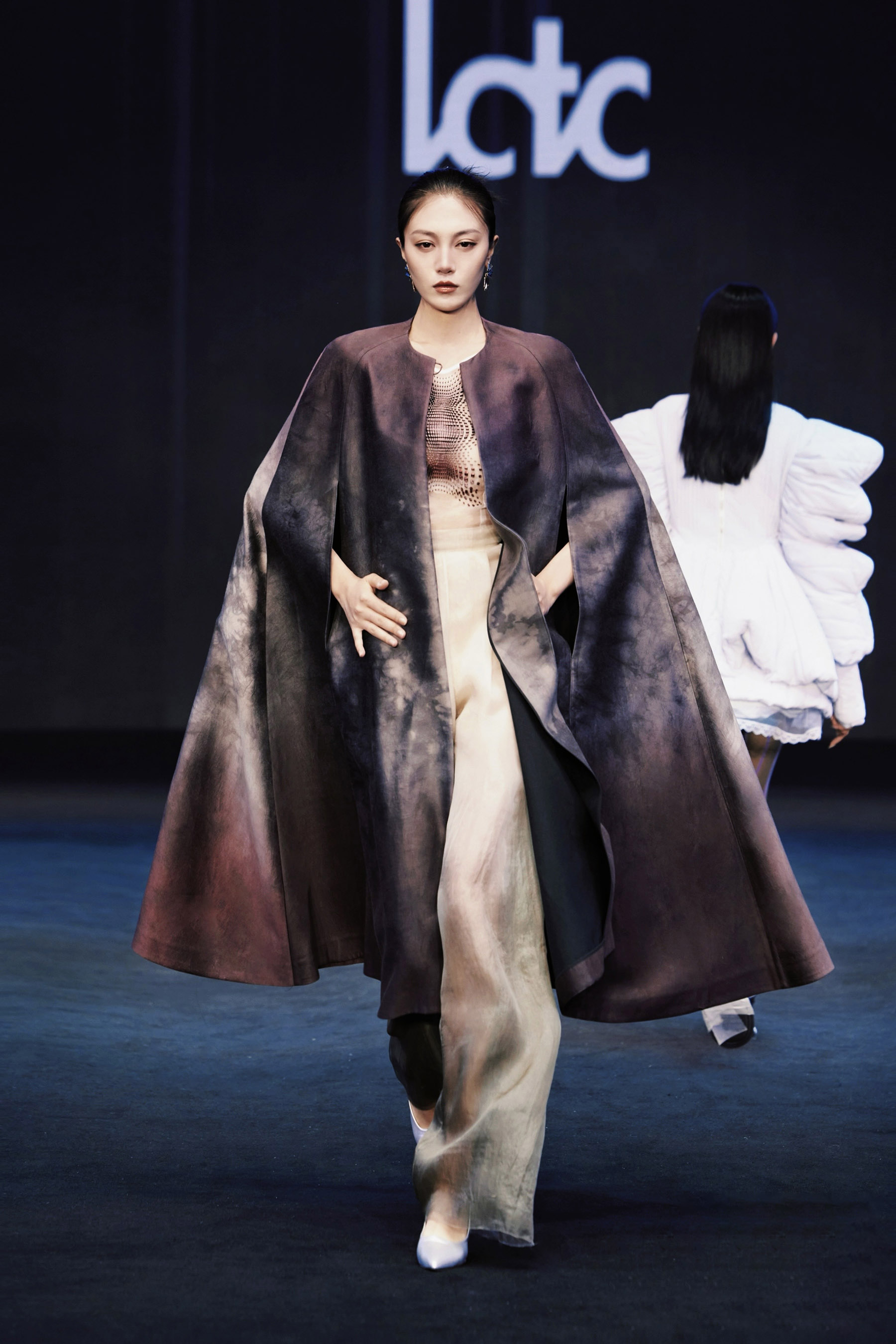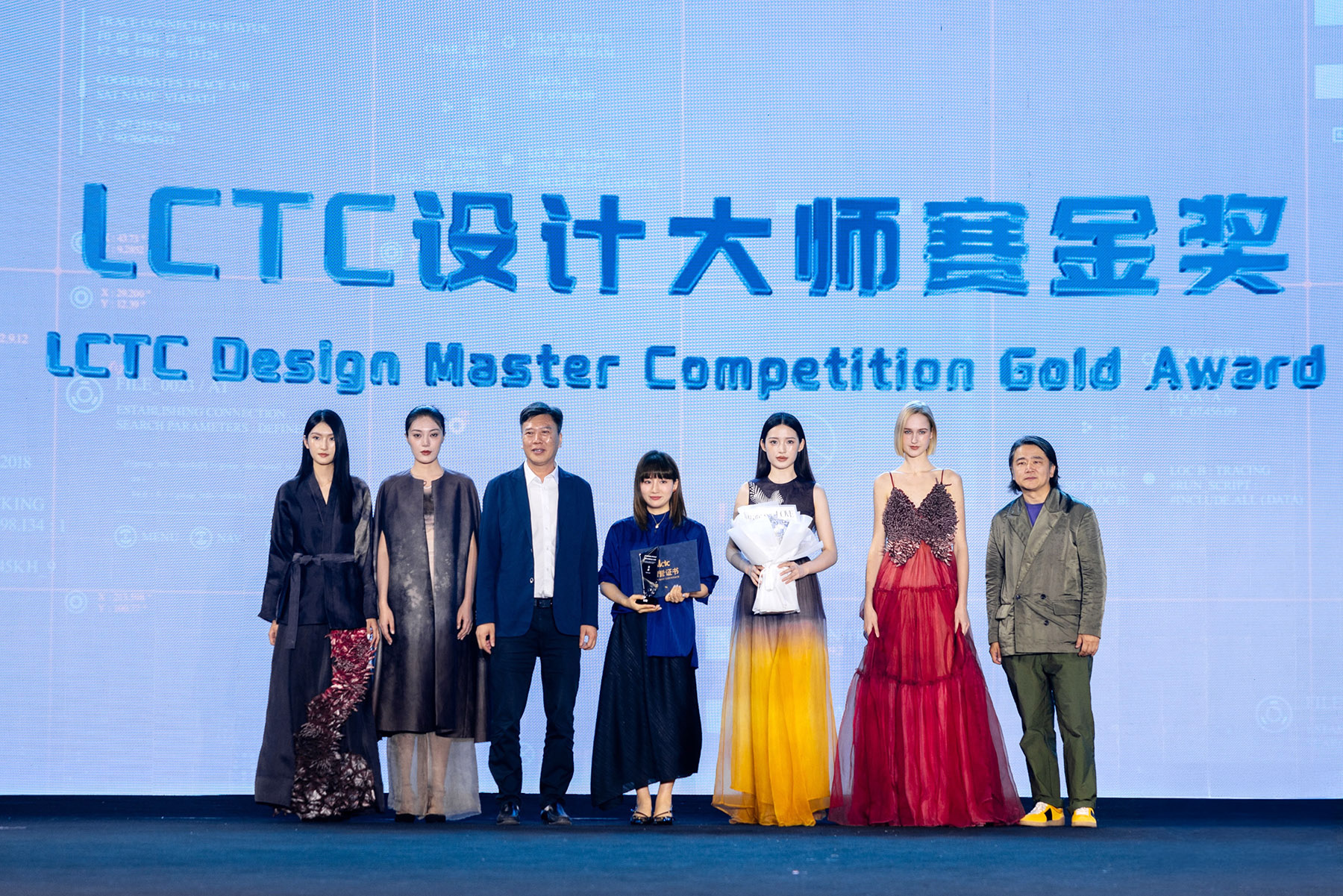Exquisite ethnic craftsmanship, innovative fabrics and vibrant, eco-friendly palettes are showcased in competition, Xing Wen reports.

Chinese Japanese student Aya Maruyama's life was divided neatly into "before and after" the day she met the ethnic embroiderers of Southwest China's Guizhou province.
In 2016, then an international economics major at Beijing Foreign Studies University, Maruyama joined an embroidery promotional project as a translator.
Raised in Japan, she had never ventured into China's remote southwest, where the Bouyei and Miao ethnic groups inhabited misty mountains, their villages reachable only by foot.
READ MORE: Tradition back in fashion
There, she watched local embroiderers, without any sketches or patterns, sing songs while crafting intricate designs with needles.
"The embroidery was stunning," Maruyama recalls.
But her awe soon turned to dismay when she learned that the hand-stitched fabric sold for around 20 yuan ($2.8).
"The compensation didn't match the skills invested. Such exquisite craftsmanship deserves better recognition," she thought.

That trip soon ignited Maruyama's passion for China's ethnic traditional arts, which ultimately rerouted her career path.
Determined to bridge the gap between these crafts and modern consumers, she enrolled in the Academy of Arts and Design of Tsinghua University in 2021 to study fashion design.
She believes fashion can elevate the value of these cultural heritages and present them in innovative forms to more consumers.
Now a doctoral candidate, Maruyama recently claimed the gold prize at the LCTC Design Master Competition held in the Keqiao district of Shaoxing, Zhejiang province, with a collection inspired by the Bai ethnic group's traditional tie-dye techniques from Yunnan province.
Under her graduate mentor's guidance, Maruyama spent two weeks in Dali, Yunnan, working with local tie-dye artisans in 2022.
This immersion sparked her interest in plant-based dyes, whose eco-friendly properties align with her sustainable fashion philosophy. Since then, botanical dyeing has become central to her creative practice.
The competition's emphasis on merging fashion with technology led Maruyama to develop an innovative process — digitally scanning traditional Bai tie-dye patterns, transforming them through parametric design, and then 3D-printing the motifs onto silk fabric.

The vibrant palette is achieved using natural dyes extracted from pomegranate rinds, tea leaves and traditional Chinese herbs.
"I want to challenge the stereotype that plant-dyed fabrics are limited to muted colors," she explains.
"With clothing as my chosen medium, I hope to bring intangible cultural heritage into the contemporary lifestyle through fashionable, innovative expressions."
The competition finals featured 29 young designers from countries like China, Japan, France and Italy, showcasing cutting-edge works integrating innovative fabrics, futuristic functionality, sustainable design, and metaverse interaction through AI generation and 3D printing technologies.
Keqiao district, home to over 8,000 textile manufacturers with a complete industrial chain and mature distribution network, has recently been developing its creative fashion sector.
The design competition serves as a platform to spot new design talents.
Silver prize winner Wang Yijie, a 20-year-old sophomore at Hebei University of Science and Technology, benefited from the district's textile industry cluster.
An avid mountain climber, her entry featured three women's outdoor outfits designed for climbing Gunung Ijen volcano, Mont Blanc and Mount Qomolangma.

Through the competition organizers, Wang connected with local Keqiao outdoor apparel manufacturers to source specialized waterproof fabrics.
"I combined them with knitwear," she explains. "The knits bring out a soft, feminine vibe, while the tech fabrics act like armor, keeping us safe."
Wang notes that preparing for the competition enhanced her social, hands-on, and presentation skills.
"I thoroughly enjoyed the process of creating designs that balance functionality and fashion," Wang adds.
"This experience confirmed my desire to focus on functional clothing design."
Mikha Mekler, a London College of Fashion lecturer and the competition judge, expressed her excitement in witnessing sustainable design approaches taking root in China's robust manufacturing ecosystem.
"I'm encouraged to see these innovative approaches taking root in a major manufacturing hub like Keqiao. It means our young designers can directly influence production processes and help scale these methods," she says.
ALSO READ: Traditional brands use technology to meet modern demand
"What brings me joy is seeing students express their true selves through design language," says Mekler. "I want fashion to be a positive force, something people can enjoy and experiment with freely; which is exactly what we saw in this competition." Simon Collins, the former dean of Parsons School of Design's fashion school, also served as a judge in the competition.
Now based in Shanghai, Collins is an active participant in China's fashion scene frequently appearing at industry events and sharing his sharp fashion commentary through Chinese social media platforms such as Xiaohongshu, or RedNote.
"I know Chinese designers are brilliant," he says, naming renowned Parsons alumni of Chinese descent, including Jason Wu, Alexander Wang and Derek Lam.
"There are many more to follow. However, they can only maximize their skills and potential if they think in a wide sense. They must think internationally whether or not they plan to sell abroad. One of my key roles in China is to help designers develop this perspective," adds Collins.
Contact the writer at xingwen@chinadaily.com.cn


